Astrology and astronomy, constellations signs of Zodiac, popular concepts -->rus
"Astrology. Windy frivolous flighty light-headed daughter of Astronomy". Just like this humorously named astrology are studies about the prediction of the future on the basis of looking after space bodies. Astrology, unlike astronomy, not simply looked after stars, but set their influence on life of people (so, in any event, astrologers asserted). It was engendered in Babylonia: looking after Sun and Lunar eclipses, the astrologers of Country between tried to predict the events of state scale: poor harvest and harvest, dry spell and flood, prosperity welfare society of people and arrival of dreadful diseases.
Further development of astrology is related to Greece. Here in its basis studies lay down about the "world liking" two-way influence of all of forces and phenomena. Greek astrologers predicted the fates of not only the states but also separate people. They took into account thus, in what constellation a Sun was in the moment of birth of people, as disposed in this moment of planet (not only planets, being in one constellation with a heavenly Sun, were important but also nearby, opposite). Astrologers developed the difficult system of classification of constellations and planets. They divided them by dry and moist, on masculine and womanish, bound to four "first, basic elements" (by air, water, earth and fire), with metals, by colors etc.
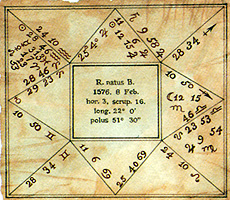 A main principal brainchild of astrology is horoscopes. Their name results from greek horoskopos - "looking after time". Horoscopes are an original card of location of stars and constellations in the moment of birth of people. Their co-operation and predetermines the further fate of new-born people.
A main principal brainchild of astrology is horoscopes. Their name results from greek horoskopos - "looking after time". Horoscopes are an original card of location of stars and constellations in the moment of birth of people. Their co-operation and predetermines the further fate of new-born people.
A leading role at drafting of the personal horoscope was played by a supervision and jigging of moment of "passing" of a Sun and Moon, and also five planets - Mercury, Venus, Mars, Jupiter and Saturn - along an ecliptic. Influence of one or another planet was determined character of deity which this planet was linked with. For example, the stand-in of Mars (devoted war god) promised new-born victories in battles, a protection of Mercury (planets of trade god) is a resourcefulness etc. So an age-old horoscope looked (photo on the right).
Similar appearance was describe influence on new-born zodiacal constellations: it was determined character of characters, givings them the name. Did Scorpio, for example, allot borning under his sign a spite and treachery, Aries - in truth by sheepskin obstinacy, Leo - by force and by a courage etc. Is there the future at astrology? Contribution at one time remarkable astronomers gave an infatuation for astrology, for example Claudius Ptolomaeus and Iogann Kepler. Up to XVI century astrology was considered so worthy science, as well as astronomy. An end put it the Polish astronomer Copernic: created them the heliocentric system of the world converted Earth from the center of Universe in one of great number of planets, circumsolar. Appeared, that all of the slender, in detail developed system of astrology proceeded from a false parcel (when even science considered Earth the center of universe)...
However, astrology prospers till today is as exact not science, but as age-old cultural legacy and certain game in which modern humanity and persons of ripe years plays with pleasure, it is an original vent in the modern technogenic world. you will find different astrologic prognoses in many popular magazines, books, newspapers and in the Internet.
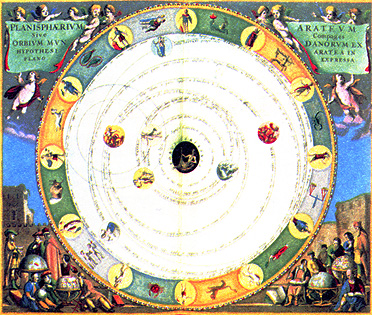
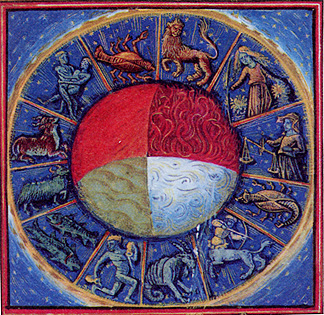
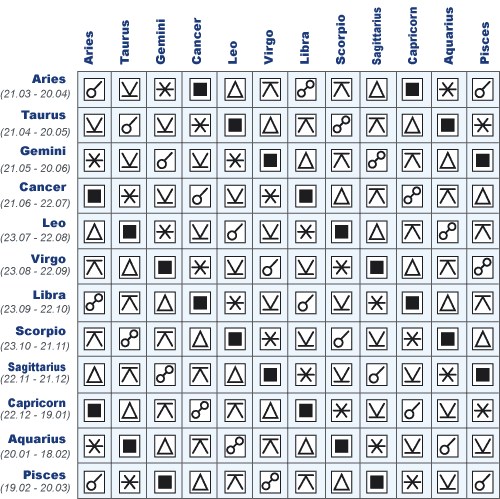
In the Western European system of signs of Zodiac (of China, Asia) twelve and they change monthly. Quality of relations is determined angular distance between Signs of Zodiac. There are seven aspects in all: connection, semisextile ("3"), sextile ("sextilis" is "6"), square ("patient"), trine ("Trinacria" is ancient name of Sicily), quikons ("qui" is "who") and opposition ("oppositio" is contrasting, objection). A stylesheet relations in obedience to western astrologic tradition with pointing of properties of different zodiacal signs is resulted on a picture higher.
 Connection is supposed by absence of division. On the whole connection corresponds strong, based on the mutual liking relations, to cooperant the mutual strengthening of tendencies. But connection can be harmonious or conflict, will make sure therefore, that you with a partner look one-way.
Connection is supposed by absence of division. On the whole connection corresponds strong, based on the mutual liking relations, to cooperant the mutual strengthening of tendencies. But connection can be harmonious or conflict, will make sure therefore, that you with a partner look one-way.
 A semisextile is a division under the angle of 30o degrees. A semisextile is supposed by acceptance of joint decisions two absolutely different people. Although relations can appear a few tense, they, nevertheless, enable newly to give a glance on life.
A semisextile is a division under the angle of 30o degrees. A semisextile is supposed by acceptance of joint decisions two absolutely different people. Although relations can appear a few tense, they, nevertheless, enable newly to give a glance on life.
 A sextile is a division under the angle of 60o degrees. A sextile determines harmonious, rich in pleasant emotions, creating additional possibilities of relation. This type is friendly to creative creation and considered very compatible.
A sextile is a division under the angle of 60o degrees. A sextile determines harmonious, rich in pleasant emotions, creating additional possibilities of relation. This type is friendly to creative creation and considered very compatible.
 A square is a division under the angle of 90o degrees. A square specifies on frictions, existing as between quite different people. The relations of this type are able to give a quite good shove to self-development and self-perfection, although astrologers consider their undesirable from weak compatibility of partners.
A square is a division under the angle of 90o degrees. A square specifies on frictions, existing as between quite different people. The relations of this type are able to give a quite good shove to self-development and self-perfection, although astrologers consider their undesirable from weak compatibility of partners.
 Trin is a division under the angle of 120o degrees. Trin behaves to the most compatible and harmonious relations, although does not give the partners of advantages as possibility in a friendly manner to meet affronted life. Such partners test natural appetence to each other.
Trin is a division under the angle of 120o degrees. Trin behaves to the most compatible and harmonious relations, although does not give the partners of advantages as possibility in a friendly manner to meet affronted life. Such partners test natural appetence to each other.
 Quikons is a division under the angle of 150o degrees. Quikons supposes a care from withstand forms of existence: partners in such relations it is possible "choir" to chuck out from usual track. These relations differ tension and require certain flexibility.
Quikons is a division under the angle of 150o degrees. Quikons supposes a care from withstand forms of existence: partners in such relations it is possible "choir" to chuck out from usual track. These relations differ tension and require certain flexibility.
 Opposition is a division in the distance 180o degrees. Opposition is distinguished by considerable tension. In the Chinese astrologic diagram relations correspond them between signs, located on attitude toward each other in the distance 180o degrees. Both in east and in western astrologic tradition this type of relations is considered the least favourable, although for the partners of mature age he promises possibilities of achievement of power equilibrium and enhanceable level of awareness.
Opposition is a division in the distance 180o degrees. Opposition is distinguished by considerable tension. In the Chinese astrologic diagram relations correspond them between signs, located on attitude toward each other in the distance 180o degrees. Both in east and in western astrologic tradition this type of relations is considered the least favourable, although for the partners of mature age he promises possibilities of achievement of power equilibrium and enhanceable level of awareness.
We always have freedom of choice, and it can help us to overcome difficulties which astrology warns. We indeed have certain possibility to form that raw material which our fate is created from, mainly - to want and manage to do it. To look in tables and decide, as far as you are compatible with a partner, unhardness. But that in actual fact does imply these information, how to use them? How indeed "compatibility" means that relations will be good; how always is "incompatibility" carried by the seal of doom? It is not. Behaves it is needed critically to it.
Astronomy literally means "science about stars" (from Greek a "aster" is a "star" and "nomos" is a "region, district & singing, song", "laudatory sing song psalm canticle stars, eulogistic of stars on sky", "nomus" is a "nosco", "to meet, cognize, study", "Nomius" is "hymn to Apollo", "a pastor, herdsman, cowboy, cattleman, stockkeeper, shepherd", is an "epithet of Apollo"). It studies a structure, development, origin, motion of space bodies and their systems, probes all of Universe. This ancient science arose up a few millenniums back: it is needed was and for measuring of time, and for determination of way on land both at the seaside and for the prediction of the seasonal phenomena (rains, droughts, snow-falls). Astronomic knowledges were used by priests - servants of ancient gods.
Movements of heavenly sky celestial sphere. People noticed a long ago, that a Sun and stars moved in sky. Actually their visible moving is related to motion of Earth. In fact, for example, it is easily possible to present in a train, that a compartment is immobile, and there, after a window, the fields, cottages and Shaws, hurry. All depends on the point of view. If to look at twirling Earth outside, Moscow, for example, rushes with speed about 900 km/h. But we do not notice it, because speed along together with it.
We talk: A "Sun rising sunrise", when actually Earth turned to meet to his rays. But Earth not only is revolved about the axis with a period in one days - for a year it walks around a Sun yet. And a self Sun flies among stars, the picture of star sky changes in course of time from it (true, stars-neighbours so far, that during all of history of humanity these changes are almost unnoticeable, and the hunters dressed in hides on mammoths saw above itself much the same the sky, as well as we). A lot of ages ancient Indians considered back, that Earth was in a center a hard sphere. At first a metallic egg floated in primitive waters, then in him god-creator was engendered Brakhma. He created flat round Earth into an egg, and a shell became sky. Ancient Persians and greeks had alike myths. These fairy-tale presentations appeared a wonderful mathematical model for astronomers. Very comfortably to present day's rotation of Earth as motion of imaginary celestial sphere.
Star stellar coordinates. It is possible on a celestial sphere, as on a globe, to conduct the system of co-ordinates, look like geographical. Wherein a celestial sphere is crossed by an earthly ax (imaginary line which a planet is revolved round), there are the world poles - North and Sonth. They are located exactly above the North and Sonth poles of Earth; that is why it is so useful to be able to find the North pole of the world which lies not far from a pole-star on the tag of tail of Little Dipper: he sets sending to the north.
It was lucky the habitants of the Sonth hemisphere less than: A south pole is not marked a star. I am on sky and celestial equator, he passes on equal distance between poles and lies above an earthly equator, dividing sky by North and Sonth celestial hemispheres. There are the parallels, above earthly parallels, and meridians, which, naturally, do not stand motionlessly above earthly, but revolved, doing one turn in days. Only an usual breadth and longitude not get accustomed in astronomy: it is accepted to designate longitude of celestial objects a letter "alpha" and to name a direct ascent, and to designate a breadth a letter "delta" and to name declension. Declension is counted off from an equator, and direct ascent - from the point of vernal equinox. By this system of co-ordinates it is possible to define the "address" of any star in any point of celestial sphere. It is not needed only to forget that sphere this - imaginary, that it is a model, in-use exceptionally for comfort of supervisions and some calculations.
However, as turned out, the point of vernal equinox, which astronomers took for basis at determination of star co-ordinates, is not immobile: it very slowly, but all the same displaced easterly westward and does a complete turn round an ecliptic (to another imaginary line of celestial sphere) approximately after 26 000 years! Found out this phenomenon, getting the name "precession", ancient greek astronomer Hipparkh. A precession is related to that an ax which Earth is revolved round is inconstant: it also moves slowly, describing an imaginary cone. Nothing alike takes a place, if we will start child's toy is a whipping top or top: the handle of top will describe an in mid air imaginary cone. As an earthly ax moves because of precession, the world poles are displaced. In our epoch the celestial North pole almost coincides with a pole-star.
A Sun can be seen in the different areas of sky: in the morning it gets up on the east, in the evening sits down westering; in summer rises highly above earth, in winter stands low; at midday is in a zenith (to the highest point), in other time - below. All of points of celestial sphere, in which at different times more day and year it is possible to find out our luminary, are folded in a large circle - ecliptic. Astronomers name the large circle of celestial sphere, which visible annual motion of a Sun is on, an ecliptic. This name can be translated as a "bar of eclipses", and it is relating with a circumstance which astrologers noticed as early as deep antiquity, looking after Sun and lunar eclipses (moments, when to the earthly observer a Sun or Moon partly or fully stop to be visible, a Sun - because recovered a lunar disk, Moon - because closed shade of Earth). So, eclipses take a place only then, when Moon goes near intersections the orbit with an ecliptic.
The orbit plane of ecliptic is obliquity in relation to the plane of celestial equator under the angle of 23o27'8''. The ax of rotation of Earth is not strictly perpendicular the plane of its presun orbit, but inclined in relation to it on the same 23o27'8''. By the way, representing this inclination, all of globes are models of earth - also inclined a bit aside. An ecliptic, like an equator, also divides a celestial sphere by two halves, and it have the poles: A north pole of ecliptic is in constellation of Dragon in 23o27'8'' from the North pole of the world. The plane of ecliptic serves as a basic plane in the system of celestial co-ordinates, which is sometimes used in astronomy along with equatorial: in this case distances are counted off from an ecliptic, but not from a celestial equator.
Zodiac. The region of ecliptic came into the special notice of ancient astronomers. They looked after it not only in the day-time but also at night, when stars and constellations are groups of near stars, accordion in the memorized pictures appeared on a firmament. Naturally, those constellations which with the offensive of night entered on the daily road of a Sun seemed to the astronomers especially important and considerable. The ancient supposed that these accumulations of stars are related to the luminary some special connection. Not surprising, that exactly in area of ecliptic there are most ancient from known humanity of constellations.
These most constellations present appearances of beasts (in Greece a "animal" is a "zoon"), therefore all of area (by the way, a "area" is translated as a "belt") of ecliptic got the name of zodiac - "feral belt". The most ancient zodiacal constellations were selected as early as Babylon, originally they were counted by 18, but their number is gradual dwindled to modern - 12: Aries, Taurus, Gemini, Lion, Cancer, Virgo, Libra, Scorpio, Sagittarius, Capricorn, Waterbearer, Pisces. For present astronomers they differ little what from other 76 (in all on the modern card of star sky 88 constellations), but in history of culture they had to play an enormous role: from the most ancient times more humanity trusted that all of them are able variously to influence on life of people. Modern chart of Zodiacal constellations. On by old times more to the chart, to representing motion of planets round a Sun, presented and belt of ecliptic with an image 12 cardinal signs of zodiacal constellations.

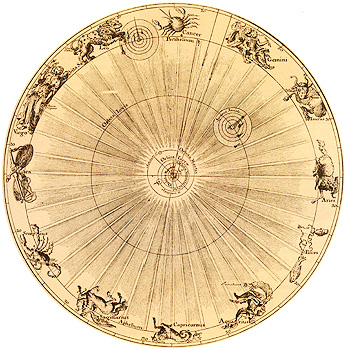
In the day sky of stars it is not visible, but they there are, and the Sun makes the daily way together with them. With what constellation the Sun moves, it is visible on two next constellations: on previous which rises directly before a dawn, and on the following which is on horizon after a decline. For example, if at a morning dawn the Lion, and on evening the Maiden the Sun is between them in constellation the Cancer is visible. Ancient astronomers have established, that the Sun, moving on a belt from 12 constellations, spends in each of them about one month. But that mean words "the Sun is in such constellation".
After all the Sun appears in the sky in the afternoon, and stars - at night. But here if the sunlight did not eclipse for us in the day sky of a star, we would see the Sun - the star closest to us - against one of 12 zodiac constellations consisting of remote stars. That constellation which is eclipsed by solar beams, and will appear "defining" for the given period. However to consider its stars in the sky it will be possible not soon - in half a year when the Sun will appear in opposite zodiac constellation. In a plane эклиптики and in a zodiac belt movings of five planets of the Solar system appreciable with open years, Mercury, Venus, Mars, Jupiter and Saturn are observed also.
A Sun in the annual trip on an ecliptic passes through four certain points. First - this is places of crossing of ecliptic with a celestial equator. As you know already, the plane of ecliptic is crossed by the plane of celestial equator under a angle approximately 23o, consequently, at two imaginary circumferences, lyings on a celestial sphere, - celestial equator and ecliptic - two intersections are present. When a Sun is in this points, it ascends exactly on the east and calls exactly on a west. Length of day at this is exactly equal length of the night (and length of day in one hemisphere is equal length of day in other hemisphere), therefore this points name the points of equinox - spring and autumn.
In our epoch a vernal equinox is on March, 21, and autumn - on Septembers, 23. We not by chance said "in our epoch": business is in that the points of equinox move on an ecliptic, although and very much slowly, - they as if move to meet to visible motion of a Sun. Noticed this yet Hipparkh in II century to the A.D. Given phenomenon was got by the name of precession (in Latin this means "anticipating", "motion ahead"), and to understand his connection with motion of earthly ax science was able only after much ages are after opening.
The equinoctial pointdivide the circumference of ecliptic (360o) on two sectors, on 180o each. Other two the important for astronomy points of ecliptic are located in the middle between the points of equinox, this is points of ecliptic, maximally remote from a celestial equator. In one from them a Sun rises above horizon higher, than in any other day of year, it below than all in other. The names for this points were imaginary in the North hemisphere of Earth, lying under the North celestial hemisphere, therefore that of two points, which is in the North celestial hemisphere, named the point of summer solstice, and that in Sonth, - by the point of winter solstice (it is known in fact, that, when at us the winter, in the Sonth hemisphere summer, and vice versa).
For us, habitants of country, being in the North hemisphere, summer solstice, on Junes, 22, - the longest day in a year, and winter, on Decembers, 22, - the shortest, and for an observer, being in the Sonth hemisphere, anywhere in Africa, Australia, South America or Antarctic Continent, - vice versa: on Decembers, 22 there high summer, longest day and shortest night, and on Junes, 22 is the winter: a day is short, and night is long.
Described four points are points of vernal and autumn equinoxes and point of summer and winter solstice - divide the circumference of ecliptic by four sectors on 90o degrees. A period for which a Sun passes one of these sectors is named an astronomic season. Astronomic seasons are counted off from the moments of equinox and solstice: spring - from March, 21 to Junes, 22, summer - from Junes, 22 to Septembers, 23, autumn - from Septembers, 23 to Decembers, 22 and the winter - from Decembers, 22 to March, 21. you will pay a regard to lack of coincidence astronomic seasons with our pictures of times more of year: on a calendar a spring comes on March, 1, summer - on June, 1, autumn - on September, 1, and the winter - on December, 1.
Astronomic seasons, going away with our traditional calendar, are straight unconnected neither with a weather nor with a climate. At all of earthly peripeteias astronomic seasons will remain unchanging and stable, in fact they are determined the not whims of weather, but motion of Earth on an circumsolar orbit. On a photo: starinaaya engraving. An astrologer, shamed openings, done astronomers, tears a horoscope. XVIII century Age-old image of astronomic card of star sky.
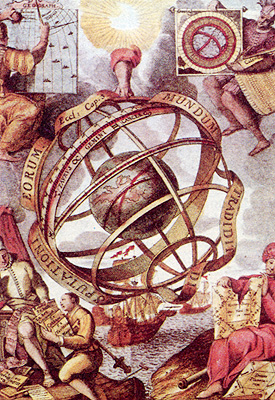
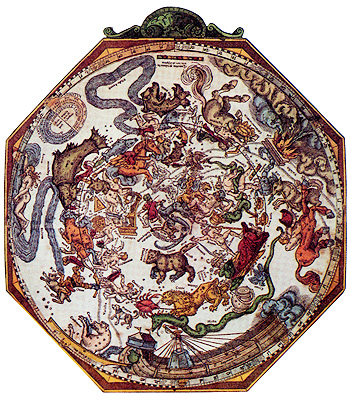
Zodiacs, horoscopes stones
Spring:
 20.02-20.03 - symbol of Zodiac Pisces (Fish), horoscope of the stone
20.02-20.03 - symbol of Zodiac Pisces (Fish), horoscope of the stone
 21.03-20.04 - symbol of Zodiac Aries (Ram), horoscope of the stone
21.03-20.04 - symbol of Zodiac Aries (Ram), horoscope of the stone
 21.04-21.05 - symbol of Zodiac Taurus (Bull), horoscope of the stone
21.04-21.05 - symbol of Zodiac Taurus (Bull), horoscope of the stone
Summer:
 22.05-21.06 - symbol of Zodiac Gemini (Twins), horoscope of the stone
22.05-21.06 - symbol of Zodiac Gemini (Twins), horoscope of the stone
 22.06-22.07 - symbol of Zodiac Cancer (Crab, бrayfish), horoscope of the stone
22.06-22.07 - symbol of Zodiac Cancer (Crab, бrayfish), horoscope of the stone
 23.07-23.08 - symbol of Zodiac Leo (Lion), horoscope of the stone
23.07-23.08 - symbol of Zodiac Leo (Lion), horoscope of the stone
Autumn:
 24.08-23.09 - symbol of Zodiac Virgo (Native, Maiden), horoscope of the stone
24.08-23.09 - symbol of Zodiac Virgo (Native, Maiden), horoscope of the stone
 24.09-23.10 - symbol of Zodiac Libra (Balance), horoscope of the stone
24.09-23.10 - symbol of Zodiac Libra (Balance), horoscope of the stone
 24.10-22.11 - symbol of Zodiac Scorpio (Scorpion), horoscope of the stone
24.10-22.11 - symbol of Zodiac Scorpio (Scorpion), horoscope of the stone
Winter:
 23.11-21.12 - symbol of Zodiac Sagittarius (Archer), horoscope of the stone
23.11-21.12 - symbol of Zodiac Sagittarius (Archer), horoscope of the stone
 22.12-20.01 - symbol of Zodiac Capricorn (Goat), horoscope of the stone
22.12-20.01 - symbol of Zodiac Capricorn (Goat), horoscope of the stone
 21.01-19.02 - symbol of Zodiac Aquarius (Water Bearer), horoscope of the stone
21.01-19.02 - symbol of Zodiac Aquarius (Water Bearer), horoscope of the stone
- How to pick up the stone of a horoscope and symbol of Zodiac, general recommendations
- All 12 symbol of Zodiac - summary table, compatibility of stone for 12 months
- The special stone are universal stone and minerals, and also stone outside symbol of Zodiac ("universal" stone)
- Astrology and astronomy, constellations of Zodiac, popular concepts
- Planets and stone, astrology of planets and mythical gods-promoters
- East horoscope, accordance 12 beasts and years on an east calendar, table
- Horoscope of druids (accordance of dats time of year and plants)
